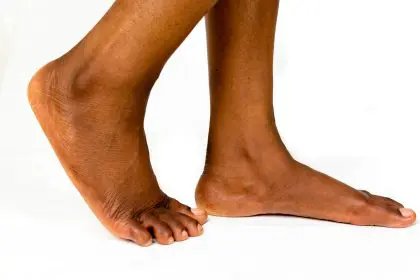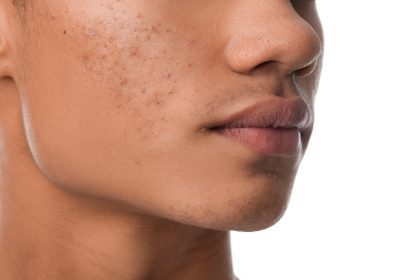The internet buzzes with claims about an unusual nighttime ritual that involves placing sliced onions inside socks before bed. This practice, which has gained momentum across social media platforms, promises everything from improved circulation to toxin removal while you sleep.
The concept centers around the belief that onions can draw out impurities through the soles of your feet during rest. Advocates suggest that the sulfur compounds naturally present in onions work as magnets for harmful substances in the body, pulling them through the skin’s pores on your feet.
The science behind onion compounds
Onions contain powerful sulfur-based compounds called organosulfides, which give them their distinctive smell and many of their health properties. These compounds include allicin, quercetin, and various sulfides that have demonstrated antimicrobial and anti-inflammatory effects in laboratory settings.
When onions are cut or crushed, they release these volatile compounds more readily. The theory suggests that placing cut onions against the skin allows these substances to penetrate through the feet’s pores, potentially offering health benefits throughout the night.
The feet contain some of the body’s largest pores, which supporters of this practice claim makes them ideal entry points for beneficial compounds. Traditional reflexology maps suggest that different areas of the feet correspond to various organs and body systems, leading some to believe that onion placement can target specific health concerns.
Traditional medicine perspectives
This practice has roots in various folk medicine traditions around the world. European folk remedies have long incorporated onions for their perceived healing properties, while traditional Chinese medicine has historically used foot-based treatments for overall wellness.
Ancient practitioners believed that the feet served as gateways to the body’s internal systems. They theorized that applying certain substances to the soles could influence health conditions throughout the body, from respiratory issues to digestive problems.
The modern version of this practice typically involves cutting fresh onions into slices, placing them on the arch of each foot, and securing them with socks overnight. Practitioners often wake to find the onion slices darkened, which they interpret as evidence of toxin extraction.
What actually occurs during the night
When onions remain in contact with skin for extended periods, several physical and chemical processes take place. The moisture from your feet interacts with the onion’s natural compounds, creating a humid environment that can affect both the onion and your skin.
The darkening of onion slices observed by morning results from natural oxidation processes rather than toxin absorption. Onions naturally brown when exposed to air and moisture over time, similar to how cut apples or avocados change color when left exposed.
Your feet may experience increased moisture and warmth from wearing socks with onions inside. This environment can promote blood circulation in the feet, which some people find soothing or beneficial for comfort.
The strong aroma of onions can also affect your sleep environment. Some individuals find certain scents relaxing or stimulating, which might influence their sleep quality in various ways.
Potential skin reactions and considerations
Direct contact between raw onions and skin can cause reactions in sensitive individuals. The sulfur compounds that make onions beneficial in cooking can also irritate delicate skin, particularly when maintained in contact for hours.
Moisture buildup inside socks containing onions creates conditions that could promote bacterial growth if feet aren’t properly cleaned before and after the practice. This environment might lead to odor or skin irritation rather than health benefits.
People with diabetes or circulation problems should exercise particular caution with any foot-based remedies. Reduced sensation in the feet might prevent early detection of skin irritation or other complications.
Those with known allergies to onions or sulfur compounds should avoid this practice entirely, as prolonged skin contact could trigger allergic reactions ranging from mild irritation to more serious responses.
The placebo effect factor
Many people report feeling better after trying onion sock remedies, which could relate to the powerful influence of expectation on perceived wellness. When individuals believe a treatment will help them, they often experience genuine improvements in how they feel.
The ritual aspect of preparing and applying this remedy might also contribute to its perceived effectiveness. Taking deliberate steps to care for one’s health, even through unconventional methods, can create psychological benefits that translate into real feelings of improvement.
Sleep quality might improve for some practitioners simply because they feel proactive about their health. The belief that they’re doing something beneficial can reduce anxiety and promote more restful sleep.
Modern wellness industry adoption
The wellness industry has embraced various foot-based detoxification methods, from ionic foot baths to detox patches. The onion sock remedy fits into this broader category of treatments that claim to remove toxins through the feet.
Social media influencers and wellness advocates have amplified interest in this practice, sharing before-and-after photos of darkened onions as evidence of effectiveness. These visual representations can be compelling, even though the darkening has simple scientific explanations.
The appeal of inexpensive, natural remedies resonates with people seeking alternatives to conventional medicine or those interested in holistic wellness approaches. Onions are readily available and affordable, making this remedy accessible to almost anyone.
Safety considerations and alternatives
While onions are generally safe for most people, sleeping with them against your skin presents some risks worth considering. The prolonged moisture exposure could soften skin excessively or create environments for unwanted bacterial growth.
Individuals seeking the potential benefits of onion compounds might consider incorporating more onions into their diet instead. Eating onions provides proven health benefits, including antioxidants and anti-inflammatory compounds that support overall wellness.
Other foot care practices offer proven benefits without potential risks. Regular foot massage, proper hygiene, moisturizing, and wearing breathable socks can improve foot health and circulation more reliably.
Aromatherapy with onion scents, if desired, could be achieved more safely by keeping cut onions near the bed rather than in direct contact with skin throughout the night.
The verdict on nighttime onion therapy
The practice of sleeping with onions in socks remains popular despite limited scientific evidence supporting its claimed benefits. While onions contain beneficial compounds, the idea that they can detoxify the body through foot absorption lacks solid scientific foundation.
The darkening of onions overnight results from natural oxidation rather than toxin extraction. Any benefits people experience likely stem from placebo effects, improved circulation from sock warmth, or the psychological comfort of taking health-focused action.
For those curious about trying this remedy, starting with short periods and monitoring skin reactions provides a safer approach than full-night applications. However, proven methods of incorporating onions into a healthy lifestyle through diet offer more reliable benefits with fewer risks.
















